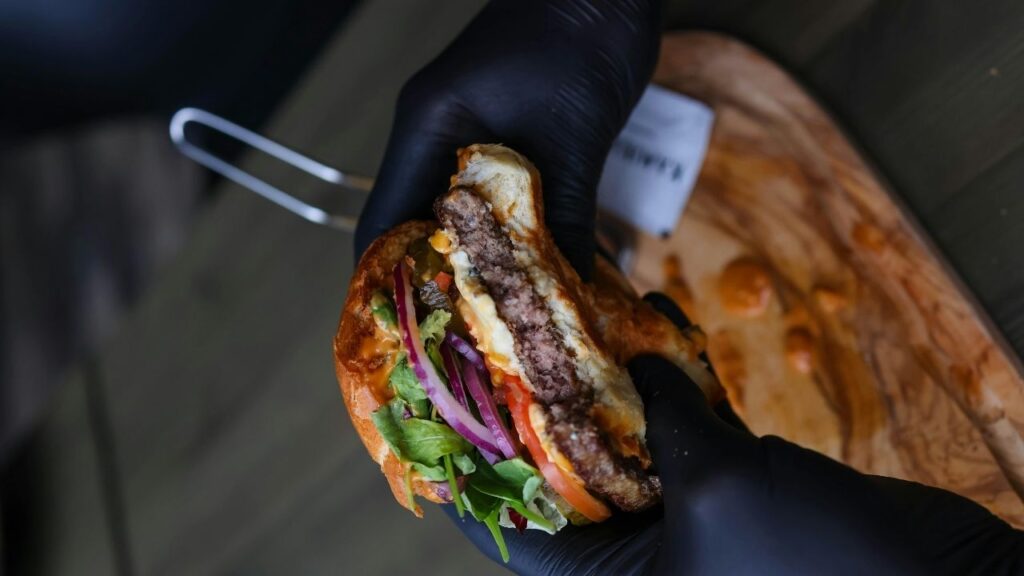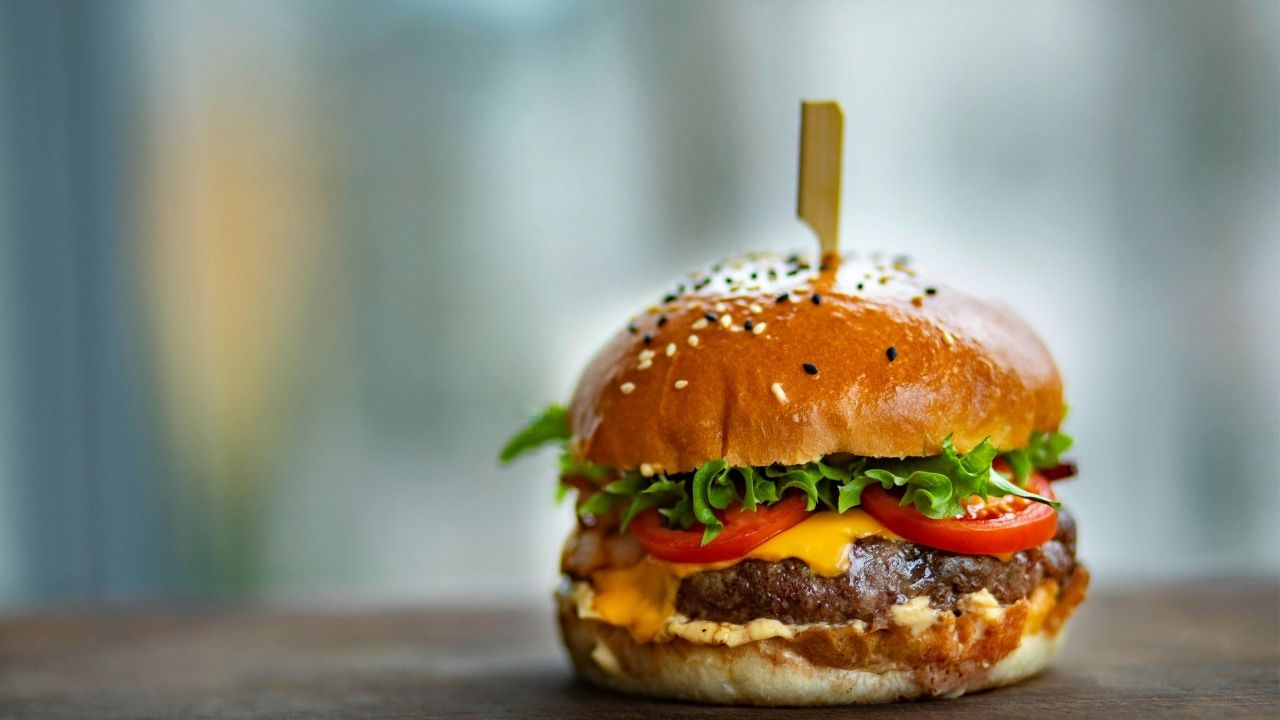In the grand lineup of iconic sandwiches—think BLTs and Reubens—a humble contender is slowly gaining a devoted following: the knob sandwich. Rooted in British culinary tradition rather than gourmet trends, it’s a simple yet robust creation, full of flavor and comfort, and it’s quietly capturing the hearts of food lovers worldwide.
So what exactly is a knob sandwich? At its most basic, it’s a sandwich built on a “knob” of bread—typically the thick, crusty end of a loaf or a round roll common in the north of England. And yes, the name comes with a cheeky double entendre (since “knob” is a playful British slang term), but don’t let that distract from the real star: a satisfying, rustic bite that’s as down-to-earth and delicious as it sounds.
Whether you’re a curious foodie, a Brit longing for a taste of home, or someone just in search of the next sandwich to try in your kitchen, this deep dive will guide you through the origins, production and status evolution of the knob sandwich.
Origins of the Knob Sandwich
The knob sandwich is steeped in traditional British-style bread-production or working-class fare. In northern England — in particular, Lancashire and Yorkshire — a “knob” is either the crusty end of a loaf of bread or a small round bread roll. These “knobs” were valued for their texture: crunchy on the outside but soft and fluffy within — ideal for sandwiches.
In mining communities and among workers, simple but hearty meals were a necessity. The knob sandwich fit the bill: a simple sort of set-up, dense enough to survive the lunch pail at least, and filled with whatever hearty stuff happened to be around. Eventually, this portable lunch option became a household mainstay.
Ingredients Breakdown
The knob sandwich is all about contrast and balance: crunchy versus soft, salty versus tangy, creamy versus crisp. Here’s what you need to know:
Bread (The Knob):
- Austrian deli bread or crusty bread roll
- Ends of sourdough, whole grain or rustic white loaf
- Rolls from an artisanal bakery or homemade bread, for authenticity
Fillings:
- Proteins: Cured ham, roast beef, corned beef, turkey, grilled chicken
- Cheese: Aged cheddar, Red Leicester, Lancashire cheese
- Veggies: Tomatoes, lettuce, red onion, arugula
- Condiments: Branston pickle, mustard, chutney, horseradish
- Spread: Salted butter, mayo, garlic aioli
This variety of ingredients creates limitless possibilities for the ultimate knob sandwich.
Step-by-Step Recipe
How to Make a Classic, No-Fuss British Knob Sandwich at Home
Ingredients:
- 1 piece of crusty bread or roll (halved)
- Two slices of mature cheddar cheese
- 3 slices of honey roast ham
- 1 tbsp Branston pickle
- 1 tsp butter (softened)
- Optional: slices of tomato, lettuce
Instructions:
- Cut your bread in half horizontally, leaving the top crust in one piece.
- Butter the bottom half and cover the top with Branston pickle.
- Add layers of cheese, ham, and whatever veggies you’re including.
- Close the sandwich and set the slices firmly on the work surface, then slice in half diagonally.
- Serve with crisps or a pint of ale for full British experience.
This recipe is an uncomplicated sandwich idea that packs maximum flavor for minimal work — great for a quick lunch or a satisfying dinner.

Regional & Modern Variations
Part of the knob sandwich’s staying power has to do with versatility. And across the UK — and now the world — there are variations aplenty:
Knob Sandwich, Lancashire-Style:
- Lancashire cheese
- Pickled onions
- Oven-bottom roll
Yorkshire Roast Beef Knob:
- Roast beef
- Horseradish cream
- Whole grain bread knob
Gastro-Pub Twist:
Pork belly
Apple slaw
Toasted sourdough knob
Vegan Knob Sandwich:
- Grilled tofu or tempeh
- Vegan mayo
- Pickled red onions
- Arugula on whole grain knob
These are the combinations that demonstrate how the knob sandwich can level up from a lowly lunch to a contemporary artisan sandwich.
Common Mistakes to Avoid
Even a basic sandwich can become a disappointment. Here are some pitfalls to avoid:
- Using soft bread: You lose the textural integrity of the sandwich.
- Overstuffing: It is hard to eat and messy.
- Mismatched flavors: Don’t go nuts — not every ingredient works together.
- Ditching the butter or spread: No one wants a dry sandwich!
If you can avoid these mistakes, you’ll be able to pull the ideal knob sandwich every time.
Reader Interaction Section
We want to hear from you! Have you ever made a knob sandwich? Do you have a twist from your region or a secret ingredient? Post your version in the comments, or tag us on social media using #MyKnobSandwich.
Have an idea for a new variant? Want your recipe featured? Send it in — we might feature it in our next article.
Final Thoughts
The knob sandwich isn’t just a cheeky name — it’s a relic of British food heritage begging to be reimagined. Whether you like it the old-fashioned way, with cheddar cheese and pickle, or the way of the moment, with pork belly and slaw, one thing’s for sure: This $10 sandwich packs a meal (pun intended).
James Beard Foundation: The Knob Sandwich Is the Only Thing You Need in Your Meal Rotation With its hearty ingredients, crisp textures and flexibility, the knob sandwich deserves a spot in your meal rotation. Give it a shot, add your own spin, and perhaps — just perhaps — begin a new sandwich trend in your town.
FAQs
What are the 4 types of sandwiches?
The main categories of hot sandwiches consist of regular hot sandwiches as well as open-faced sandwiches and grilled sandwiches and deep fried sandwiches. Open-faced and regular sandwiches as well as pinwheel traditions and tea options and multi-decker varieties and wrapped/rolled variations belong to the category of cold sandwiches.
What do they call sandwiches in Connecticut?
In Connecticut the term “Sub” evolved from “grinder” to represent a “submarine sandwich” because its shape resembled the submarines at a nearby naval shipyard.
Why is it called a sandwich?
A common handheld food item named after John Montagu received its name because the Earl of Sandwich invented it during gambling sessions by placing meat between pieces of bread.
What is a lion sandwich?
The lion needs whole meal bread slices for its body structure and cream cheese serves as an inner decoration to blend the paw pieces together. Use emmental cheese slices with trimmed components for making the lion’s face features and nails through seeds.
Why is a hotdog not a sandwich?
No – a sandwich is a filling which has 2 (or more) pieces of bread around it. Hotdogs use a single bun.
